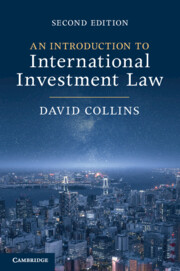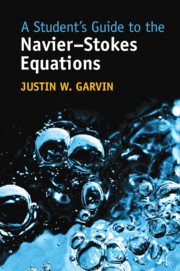Refine search
Actions for selected content:
36807 results in Cambridge Textbooks
Stage 4 - Operations on Sentences
-
- Book:
- Semantics, Pragmatics, Philosophy
- Published online:
- 22 March 2023
- Print publication:
- 16 March 2023, pp 77-111
-
- Chapter
- Export citation
Stage 1 - Introduction
-
- Book:
- Semantics, Pragmatics, Philosophy
- Published online:
- 22 March 2023
- Print publication:
- 16 March 2023, pp 1-17
-
- Chapter
- Export citation
Appendix A: - Pseudorandom Sequences
-
- Book:
- Introduction to Digital Communications
- Published online:
- 24 April 2023
- Print publication:
- 16 March 2023, pp 597-615
-
- Chapter
- Export citation
Copyright page
-
- Book:
- Semantics, Pragmatics, Philosophy
- Published online:
- 22 March 2023
- Print publication:
- 16 March 2023, pp iv-iv
-
- Chapter
- Export citation
2 - Modulation and Demodulation
-
- Book:
- Introduction to Digital Communications
- Published online:
- 24 April 2023
- Print publication:
- 16 March 2023, pp 46-142
-
- Chapter
- Export citation
Stage 3 - Composing Sentence Meaning
-
- Book:
- Semantics, Pragmatics, Philosophy
- Published online:
- 22 March 2023
- Print publication:
- 16 March 2023, pp 44-76
-
- Chapter
- Export citation
Appendix C: - Finite Fields and BCH Codes
-
- Book:
- Introduction to Digital Communications
- Published online:
- 24 April 2023
- Print publication:
- 16 March 2023, pp 618-623
-
- Chapter
- Export citation
Preface
-
- Book:
- Introduction to Digital Communications
- Published online:
- 24 April 2023
- Print publication:
- 16 March 2023, pp xi-xiii
-
- Chapter
- Export citation
Tables
-
- Book:
- Semantics, Pragmatics, Philosophy
- Published online:
- 22 March 2023
- Print publication:
- 16 March 2023, pp xiii-xiv
-
- Chapter
- Export citation
8 - Block Codes
-
- Book:
- Introduction to Digital Communications
- Published online:
- 24 April 2023
- Print publication:
- 16 March 2023, pp 433-556
-
- Chapter
- Export citation
Preface and Tips on How to Read This Book
-
- Book:
- Semantics, Pragmatics, Philosophy
- Published online:
- 22 March 2023
- Print publication:
- 16 March 2023, pp xv-xvii
-
- Chapter
- Export citation

An Introduction to International Investment Law
-
- Published online:
- 14 March 2023
- Print publication:
- 09 February 2023
-
- Textbook
- Export citation

A Student's Guide to the Navier-Stokes Equations
-
- Published online:
- 10 March 2023
- Print publication:
- 09 February 2023
-
- Textbook
- Export citation

Corporate Sustainability
- Managing Responsible Business in a Globalised World
-
- Published online:
- 09 March 2023
- Print publication:
- 30 March 2023
-
- Textbook
- Export citation
8 - Inflation
- from Part II - The Early Universe
-
- Book:
- A Course in Cosmology
- Published online:
- 31 March 2023
- Print publication:
- 09 March 2023, pp 136-172
-
- Chapter
- Export citation
Appendix D: - Symbol Definitions
-
- Book:
- A Course in Cosmology
- Published online:
- 31 March 2023
- Print publication:
- 09 March 2023, pp 405-408
-
- Chapter
- Export citation
7 - Big Bang Nucleosynthesis
- from Part II - The Early Universe
-
- Book:
- A Course in Cosmology
- Published online:
- 31 March 2023
- Print publication:
- 09 March 2023, pp 116-135
-
- Chapter
- Export citation
Preface
-
- Book:
- A Course in Cosmology
- Published online:
- 31 March 2023
- Print publication:
- 09 March 2023, pp ix-xiii
-
- Chapter
- Export citation
11 - Dark Matter
- from Part III - The Later Universe
-
- Book:
- A Course in Cosmology
- Published online:
- 31 March 2023
- Print publication:
- 09 March 2023, pp 267-290
-
- Chapter
- Export citation
Appendix A: - Natural Units
-
- Book:
- A Course in Cosmology
- Published online:
- 31 March 2023
- Print publication:
- 09 March 2023, pp 399-401
-
- Chapter
- Export citation
